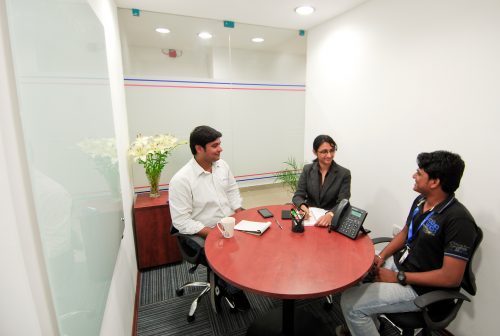
Physical and virtual teams alike need to improve collaboration in order to drive the common spirit toward realizing shared goals and objectives. Team collaboration is the buzzword now-a-days, yet how does one get a room full of people with differing opinions and perspectives to agree on a single point? A democratic organizational environment requires that every decision be taken unanimously. In such a scenario, leadership and team building are important to help the organization take the next step forward.
Team collaboration can be improved in the following ways:
1. Build leadership. Delegate ownership of goals to your team members. This is a beginning to build leadership. A champion team begins with the right team members who have a winner’s attitude. When such team members are coached and mentored effectively, they grow to become the leaders of tomorrow. A single-minded focus on the goal of the team helps the members to collaborate to work on a problem and figure out solutions. Clarity on each person’s roles and responsibilities helps a team work like a well-oiled machine, every part doing its designated job and working in harmony as a whole. Finally, to be effective, emphasis should be placed on being decisive and action-oriented. Just talking cannot prepare one to take the leap into the unknown.
2. Create trust among teams. It is rightly said that the foundation of teams is trust. Interpersonal trust relies on members meeting each other personally and developing a relationship over time, whereas virtual teams count on task-based trust to work effectively – placing faith in the member that he/she will do the job. Being responsive, taking responsibility, and fulfilling commitments enables team members trust each other.
3. Encourage innovative contributions. Innovation should be promoted and rewarded. An innovative approach could turn into the solution the team is looking for or a window of opportunity that has not been tapped so far. Team members belonging to different backgrounds bring their varied experiences to the table and enhance team building.
4. Invest in relationship practices. Most neglected, yet most obvious need. When an organization makes the effort to build and nurture inter-employee relationships, it is mirrored in the productivity and results of a team. The level of collaboration is found to be much higher when trusting relationships exist.
5. Extend recognition and rewards. Everyone craves appreciation – and recognizing and rewarding good work engenders enthusiasm and the will to explore further. Both tangible and intangible rewards, when used appropriately, drive people to achieve more.
6. Create opportunities for learning. Why would bored team members want to continue on the team? For better collaboration, opportunities should be constantly created to challenge and push team members to achieve greater heights. Allowing people the experience of trying something new with an emphasis on hear and repeat, touch and feel, and see and read keeps them on their toes.
7. Encourage continuous communication. Communication is essential in a business environment that is increasingly becoming virtual. Prompt and clear communication keeps the team together and helps them build a trusting relationship. Such a bond is necessary to go beyond personal issues to focus on the greater strategy of the organization.
Today, the business world has evolved from traditional physical offices to virtual teams and from autocratic bosses to team collaboration. The digital age has brought with it advanced and sophisticated technologies to enable people from across the globe to communicate and collaborate on a particular task. The way that people work has radically changed and so has the way that leadership and team building are approached.
As an independent coworker, deciding a place for business meetings can be quite a challenge. Most clients prefer breaking free…
There are sparks all around Gurgaon and we do not mean lights or fireworks by sparks here. The entrepreneurial community…
As the world settles into the new normal of a pandemic, being indoors, no gym classes and constantly washing hands,…